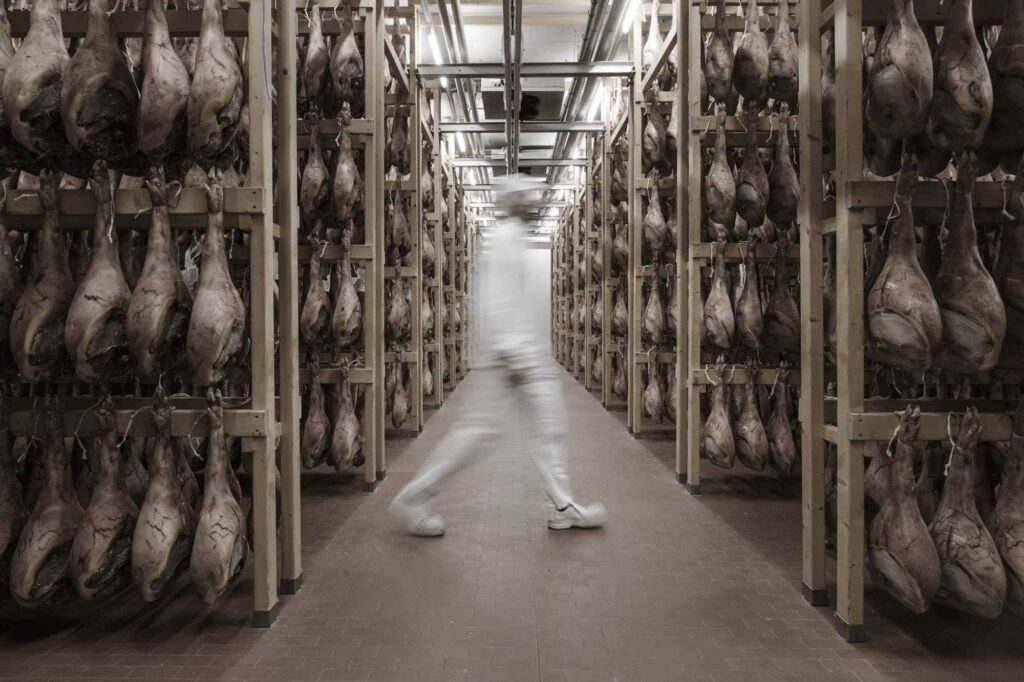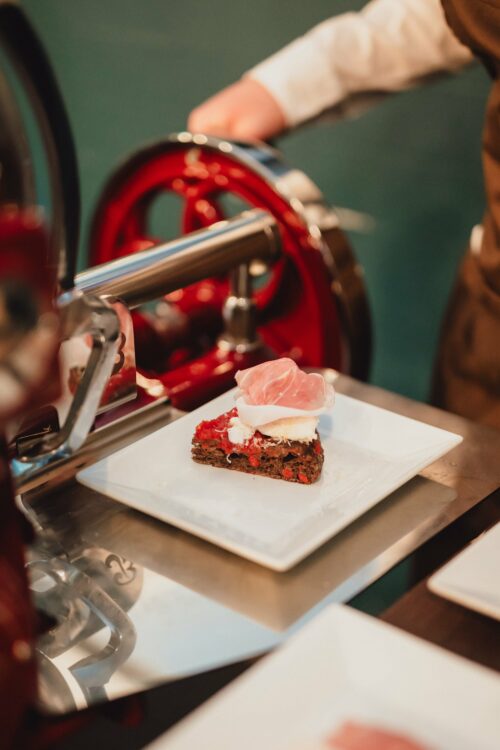The story of Prosciutto di San Daniele has distant beginnings. The term ‘prosciutto’ derives from the Latin and, according to scholars, has two different etymologies. Some believe that this word is made up of the particle pro, which indicates a prior action, and exsuctus, past participle of the verb exsugere, which means ‘to squeeze out’ or ‘to dry up’. Others, instead, lean more towards prae suctus, which means ‘sucked’. Either way, both hypotheses refer to the processing of the meat and the ageing process.
The origin of the Spanish word, jamon, is different: the name does not derive from the preservation techniques but from the French term jambon, which, in turn, comes from the Latin gamba, meaning leg. In fact, for centuries Spain has been influenced by the French language when it comes to gastronomic terminology.
In English, however, prosciutto is broadly referred to as ham, which derives directly from the Proto-Germanic hamma, which means leg.
Already for the Celts, pig farming was key to people’s livelihood, so much so that this civilisation was already familiar with prosciutti. There are historical traces which indicate that around the 5th Century BC the hindlimbs of pigs were being processed and then preserved in salt. Indispensable, not only for nourishment, these precursors of modern prosciutto were used as a trade commodity with Greek merchants. Meat coming from the Italian peninsula was, already at that time, highly appreciated beyond its shores which, as Greek doctor Hippocrates claimed, was thanks to its flavour and high digestibility.
If, in Celtic times, traces of these prosciutti are to be exclusively attributed to artefacts found in archaeological digs, in the Roman era, the first written sources appear that document the existence of this food. Some of the well-known figures of the time who wrote about prosciutto in their work include Polybius, Ovid, Apicius and Cato the Elder. In the De re rustica, a book written in 37 BC by agronomist Marcus Terentius Varro, a cured meat recipe can be found, as well as different suggestions on how it would be eaten by both the civilian population and soldiers during military campaigns.
During the Middle Ages, pig farming spread throughout all of Italy. So much so that, between the 12th and 17th century, production of all pork-based foods, and therefore also prosciutto, became a real craft. And thus, the figure of the norcino was born, that is the Italian name for the person who carried out the traditional profession of slaughtering pigs and processing the meat. An event which resulted in the creation of guilds or confraternities, and in the drafting of notices and statutes that regulated production of this food.
Prosciutto, therefore, became an increasingly refined product, so much so that by the Renaissance period it had earned itself a place of honour on the tables of noble families.
During the Lombard rule, San Daniele del Friuli was a region of conflict between the Lombards and the Bavarians. Since the very beginning, the town was known for its strong commercial vocation: San Daniele del Friuli became a public market in 1139, and eventually became one of the most important in Friuli-Venezia Giulia. In 1420, San Daniele was annexed to the Republic of Venice. In Friuli during that time, it was customary for the representatives of the Venetian Republic to visit the various communities, who would offer them gifts as a sign of respect. Some persutto (an old form of the word prosciutto) had to be amongst these gifts, as at that time it was already a valuable and exquisite food.
As of the nineteenth century, with the advent of the Industrial Revolution, cured meat factories and industrial workshops were built all over Italy, thanks primarily to new and increasingly efficient technology that gave new impetus to the cured meat industry. From 1866, the year in which Friuli was annexed to the Kingdom of Italy, Prosciutto San Daniele spread to the rest of the Boot. For the first time, San Daniele PDO took on a national importance and from there its success has never waned, becoming recognised as a typical product of Made in Italy.






